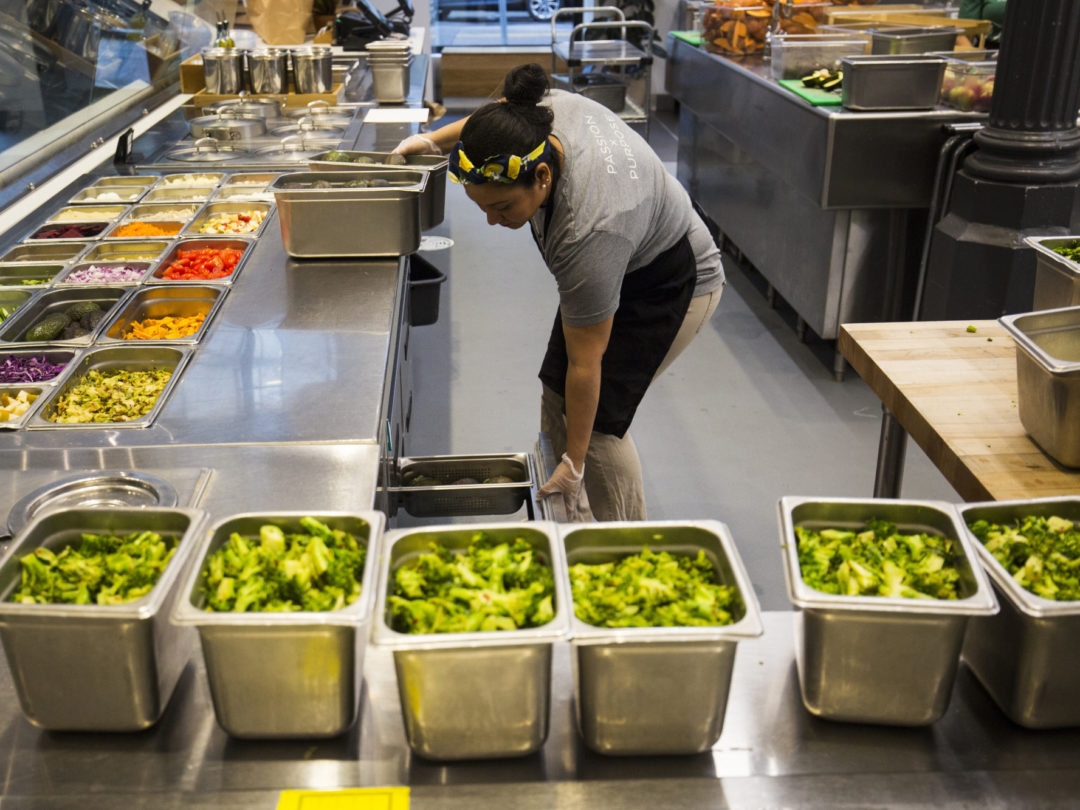
The battle over whether artificial intelligence truly mimics the workings of the human brain rages on. But if A.I. can be employed to monitor and ensure something as vital as food safety, does it really matter?
Food producers are already putting A.I. to work, to trace the provenance of their products all the way back to the farm, and as far forward as the store shelf. They’re hoping that the technology can help them to get ahead of the next health or safety scare.
Of which, it seems, there’s no end. Only last October, meat processor J.B. Tolleson, Inc. recalled nearly 7 million pounds of raw beef products, on the suspicion of their containing Salmonella newport. Infections caused by that particular species of bacteria have risen sharply in recent years, but it’s just one of many ways that food can be contaminated throughout the global supply chain.
Now comes A.I., with the promise of applying the brute force of computing to the tracking of food, and identifying potential instances of contamination. But what is A.I., really? Is it truly an approximation of the brain, or a mechanism that functions in an entirely different manner?
Symphony RetailAI, which has adapted the technology to manage consumer goods supply chains, defines it simply: “The concept of machines being able to carry out tasks in a way that looks ‘smart.’”
Note the company’s use of quotation marks around the word “smart,” indicating that it doesn’t necessarily believe artificial intelligence to be truly “intelligent” in the manner of the human brain. But even a rough model of that mysterious organ can be of great value in parsing the complexities of food supply chains. What’s more, it offers the ability to sort through masses of data with a speed and depth that no human can match.
Retailers today are more apt to pull the trigger on a recall, says Patty McDonald, global solution marketing director with Symphony RetailAI. And, in a bid to head off bad publicity caused by a botched response to an actual incident of contamination, they’re striving to provide transparency to the consumer. To do that, they needed to know the origin, ingredients and production date of every item on the shelf.
The rise of social media only makes their efforts more urgent. These days, a brand’s reputation can be ruined in an instant, and take years to recover. (If it ever does.) “We live in a social world,” says McDonald, “and being able to quickly react and capture that information is definitely on the minds of retailers and consumers.”
Perishability is a major concern. The capabilities of A.I. notwithstanding, it’s not always possible to control the sale of products according to their expiration dates. Consumers are apt to pull items from the back of the shelf, believing them to be fresher.
Still, it’s essential that producers and retailers know every step of a product’s journey through the supply chain. The resulting data can then be incorporated into the forecast, leading to a reduction in waste and better management of items with short shelf lives.
Machine learning, an aspect of A.I. that enables the system to improve its insights with experience, is of particular value in the food sector. “It’s the ability to continuously look at data to help make decisions,” McDonald says. Machine learning draws on a wealth of data, including sales and production histories, weather patterns and social media, all with the goal of crafting a more accurate forecast.
If nothing else, A.I. and machine learning surpass human efforts in their ability to handle the sheer volume of data generated by a typical supply chain. They can detect anomalies that might skew a forecast, while eliminating the need for people to manually cleanse the data.
A.I. hasn’t progressed to the point, however, where human judgment becomes irrelevant. For better or worse, a flesh-and-blood manager might deem the conclusions of an automated system to be somehow flawed. Certain tweaks, driven by a level of instinct that remains beyond the reach of silicon-based “brains,” could result. Yet machine learning is expressly designed to make such interventions progressively unnecessary. At some point, it becomes a question of humans learning to trust the machine.
McDonald says the system incorporates “guardrails” that limit its power and allow for human judgment to take precedence. She likens the algorithm to a scientist who learns from experience, reducing anomalies over time.
“People are hiring scientists to look at this information,” she says. “We’ve built something that is like a replacement for a human scientist.”
McDonald expects A.I. to become an even more powerful tool for ensuring the safety of the food supply chain. But the transition could take longer than the A.I. community expects. Many companies continue to manage their supply chains and develop forecasts through the use of spreadsheets and in-house legacy technology. It will take time for them to part with systems that have served their purpose for decades – unless a deadly outbreak of bacteria hastens the decision.
“You can’t predict health hazards,” says McDonald, “but you can understand where in the supply chain the product is, to react quickly and pull it.”







